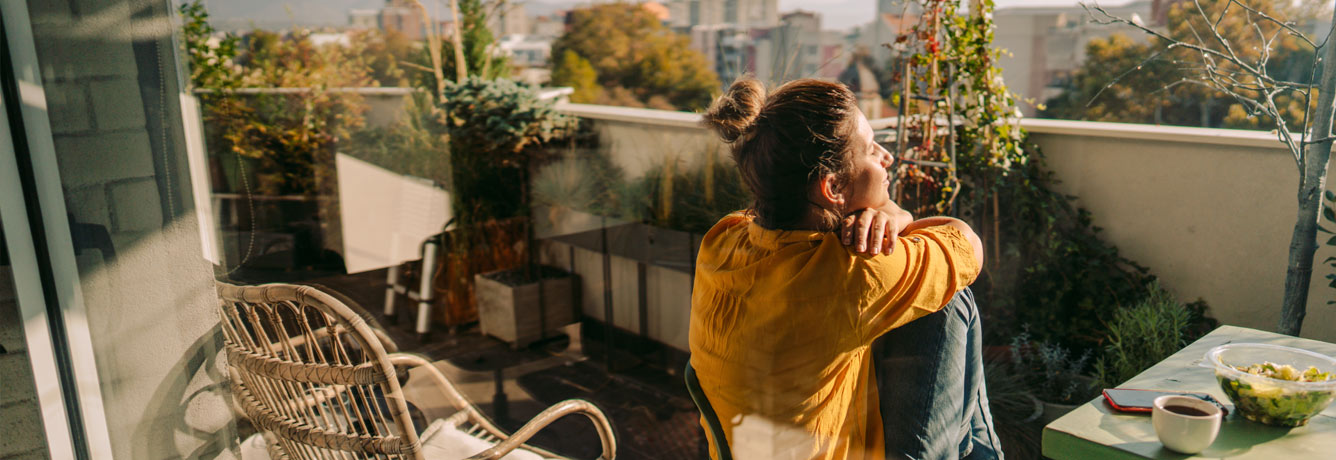How much rent can I afford?
If you’re like the one-third of Aussies who rent, you might be wondering – how much rent should I be paying? Here’s some tips to work out what you can afford and ways to avoid rental stress.
What percentage of my income should go to rent?
In December 2021, Domain reported the average weekly cost of rent in Australia’s major cities as $499 for a house and $436 for a unit. But depending on where you live in Australia, the average weekly cost of rent as well as how much income goes towards your rent differs quite a bit:
| State | Average weekly earnings | Average weekly rent | Average % of income towards rent |
| NSW | $1,764.30 | $580 | 32% |
| VIC | $1,750.70 | $430 | 24% |
| QLD | $1,646.70 | $460 | 27% |
| SA | $1,569.90 | $440 | 28% |
| WA | $1,879.70 | $450 | 23% |
| TAS | $1,520.70 | $495 | 32% |
| ACT | $1,908.60 | $645 | 33% |
| NT | $1,695.20 | $620 | 36% |
| Average Australian | $1737.10 | $488 | 29% |
Source: Savings.com.au. These values are updated regularly, so check out the Savings.com.au website for the most up-to-date figures.
However, the average rent prices and average proportion of income spent on rent aren’t necessarily the right numbers to base your spending on. To figure out how much cash you should be spending on rent, try using one of these rent-to-income ratios.
The first one is the 30% rule. That’s where you spend no more than 30% of your income on rent. So, if you’re earning $1,000 a week, you’d want to spend $300 or less on rent. Pretty simple, right?
The other one is the 50/30/20 trick. If you’re earning $1,000 a week for example, $500 would go to essentials like rent, food and bills. $300 would be for fun stuff like dinner with mates, a gym membership or a new outfit. Then the last $200 would be for your savings. To help you stick to the 50/30/20 rule, you can open up to 10 Save accounts with ubank and divide your income more easily.
Ways to avoid rental stress
If you’re spending more than 30% of your income on rent, you could be in rental stress. While you might not have full control over the amount of rent you pay, here’s some ways to lighten your load.
- If you like being around others, having flatmates could help share the costs. There’s apps like Splitwise which make divvying up household expenses like electricity and internet super easy.
- Negotiating a better deal with your landlord could also be an option. If you’re a good tenant but seem to be paying more than your neighbours, asking your real estate agent to lower the rent could pay off.
- Moving to a place just a few suburbs over is another way you could cut costs. But if you want to stay local, downsizing might be the answer. Got a second bedroom that barely gets used? Switch to a one bedder and save.
Other ways to cut costs
If your rent is still more than 30% of your income, here’s some other ways to save around the house:
- Search online for pre-loved furniture when decking out your home. Facebook Marketplace is full of great deals.
- Compare quotes for power, internet and contents insurance. You might find more bang for your buck by switching providers.
- Search the supermarket for discounts. You can also usually save by buying items in bulk (provided you have the cupboard space!).
- If you’re in an apartment building and have an unused parking spot, rent it out for some extra cash. Just run it past your landlord first.
And if you can afford it, don’t rule out buying your own property. There are pros and cons of renting and buying property, but buying a property ultimately means you are contributing to your own mortgage and building equity instead of helping your landlord pay off their mortgage with your rent.
Ultimately, how much you spend on rent is up to you. Use a rent-to-income ratio to figure out what you can afford and if you’re still feeling the pinch, our savings tips could help you avoid rental stress. Once your budget is sorted, it’s time to decorate and make your house feel like a home.



